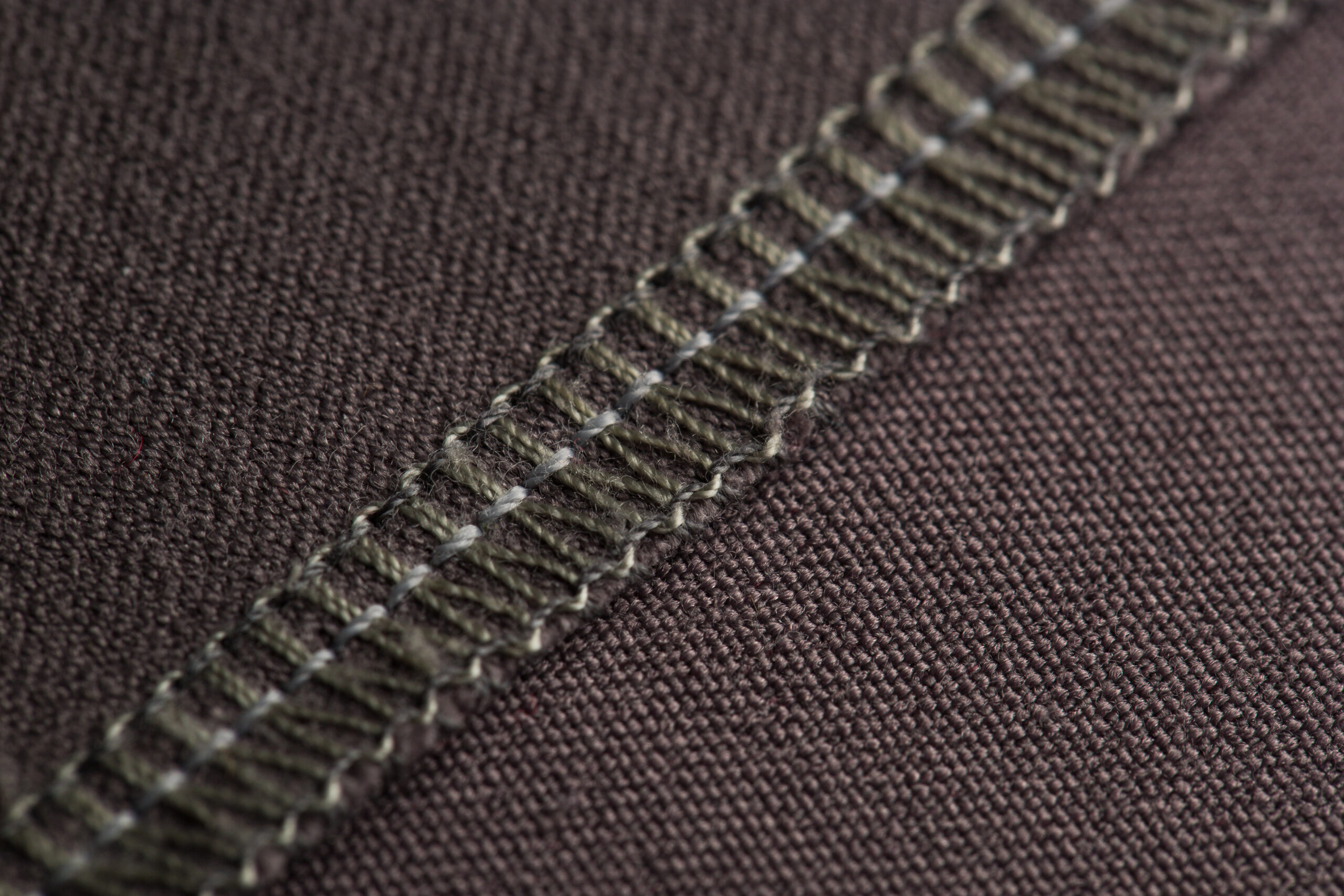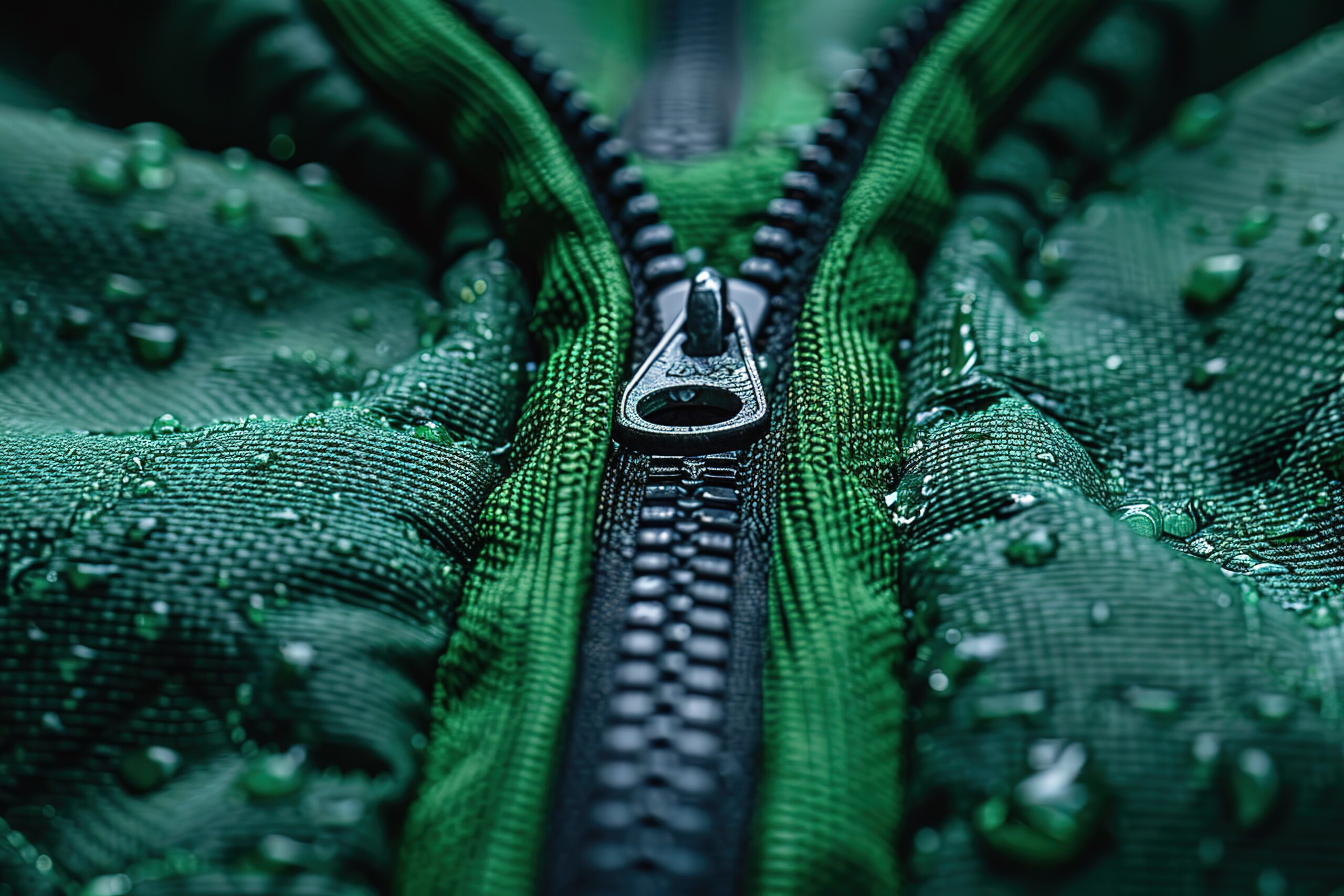Industrial textiles demand more than strength — they demand sealed performance. Whether it’s a marine enclosure, inflatable structure, or medical containment bag, seams must hold air, block moisture, and withstand environmental stress. The challenge for OEM designers is integrating functional zippers into those same sealed systems without compromising integrity.
That’s where RF welding and heat sealing technology come in. These processes fuse materials at the molecular level to form airtight seams. But combining that with a zipper — a component made of multiple layers and materials — requires precise engineering.
At LenZip, U.S.-made industrial zippers are engineered specifically for RF- and heat-sealed applications, balancing flexibility, temperature tolerance, and adhesive compatibility. This guide explains how welded seams work, how zippers can be integrated successfully, and what testing standards ensure long-term reliability.
How RF Welding and Heat Sealing Work
Radio frequency (RF) welding and heat sealing are both thermal bonding processes that create permanent joins between compatible polymer materials. RF welding uses electromagnetic energy to excite the molecular bonds within a thermoplastic, while heat sealing uses applied temperature and pressure to fuse surfaces together.
Both processes eliminate stitching and needle perforations, resulting in airtight and water-resistant seams. That makes them essential in applications like marine enclosures, inflatables, hazmat gear, hospital mattresses, and protective packaging.
However, the integration of a zipper into such seams introduces complexity. The zipper tape, coating, and substrate must be chemically compatible with the material being welded, and both must respond predictably to the same heat or RF energy level.

Zipper Tape Chemistry and Compatibility
Every zipper starts with a tape substrate, typically made of polyester, nylon, or polypropylene. For welding or sealing applications, this tape may be laminated or coated with a thermoplastic film such as PVC, TPU, or polyurethane.
The success of a welded zipper installation depends entirely on how this coating reacts under thermal or electromagnetic energy. A mismatch between tape coating and substrate leads to weak welds or incomplete bonding.
For example, a TPU-coated zipper tape bonds effectively to polyurethane-coated fabrics, forming a seamless molecular link. But pairing TPU with PVC creates inconsistent melt characteristics and potential seam separation under load. That’s why LenZip’s Zipper Materials & Finishes catalog specifies the exact coating chemistries compatible with common weldable fabrics.
Selecting the right combination of polymer layers ensures that both zipper and fabric fuse uniformly during the RF or heat-sealing cycle.
Engineering a Sealed Zipper System
Integrating a zipper into a sealed system involves more than just bonding tape edges. The geometry of the joint must support both seam continuity and zipper function.
In RF welding, the energy field is shaped by the electrode design — a flat or contoured tool that focuses current through the materials. If the electrode contacts the metal slider or zipper teeth, it can arc or deform the closure. Engineers compensate by designing welding dies with precise spacing to direct energy through the tape only.
Heat sealing follows a similar principle, using controlled temperature and pressure applied through a platen or roller. The zipper must withstand this pressure without melting the teeth or distorting alignment. LenZip’s heat-sealable zipper assemblies are constructed with high-melt polymer tapes that protect the chain while allowing the laminate coating to bond effectively.
In both methods, maintaining even temperature distribution and dwell time is key. Too little heat, and the weld is weak; too much, and the zipper’s polymer structure deforms. LenZip engineers balance these variables during product testing to determine the optimal processing window for each zipper type.
Selecting the Right Zipper Type for Welded Seams
Different zipper designs behave differently under heat and RF energy. Coil zippers, made from continuous filament nylon or polyester, offer flexibility and minimal bulk, making them the most common choice for welded seams. Their spiral chain structure tolerates bending without cracking the tape bond.
Molded plastic zippers provide higher bite strength but less flexibility. These are used where seam rigidity is acceptable, such as industrial curtains or containment covers.
Metal zippers are rarely used in welding applications because they interfere with RF fields and can overheat during thermal bonding. However, LenZip can produce hybrid assemblies where metal sliders are isolated from the weld zone to allow selective use in high-stress environments.
Each zipper type undergoes ASTM D2061 tensile and fatigue testing, ensuring that even when sealed into a weldable substrate, it maintains mechanical performance equal to traditional sewn installations.
Material Preparation and Bonding Best Practices
Before welding or sealing begins, materials must be clean, dry, and free of release agents or contaminants. Even minor residue can disrupt adhesion and create pinhole leaks. The welding environment should maintain stable temperature and humidity levels to prevent inconsistent polymer softening.
Zipper assemblies should be pre-aligned and lightly tensioned to prevent puckering. LenZip’s engineering team often recommends preheating the fabric layer — not the zipper — to equalize temperature distribution and avoid localized melt at the tape edge.
Once welded, seams should be cooled under light pressure to stabilize the bond and prevent warping. In multi-pass applications, such as large modular covers, subsequent welds must overlap slightly to ensure continuous sealing across joins.
For OEMs working with RF welding systems, LenZip provides coating compatibility charts and sample tapes for energy calibration. These tools help operators fine-tune electrode settings before full production.

Testing Airtightness and Seam Strength
Performance testing for welded zipper assemblies follows ASTM and ISO protocols adapted for coated fabrics. Tensile testing under ASTM D2061 measures how much load the seam can handle before separation. Peel and shear tests under ASTM D751 evaluate the strength of the fused joint.
For airtight or watertight applications, the seam is subjected to ASTM D7757 leak testing, where air pressure is applied inside a sealed sample to detect microleaks. LenZip’s in-house testing lab performs these verifications alongside ASTM B117 corrosion testing to ensure sliders and teeth coatings remain intact after exposure to salt, humidity, or cleaning chemicals.
Passing results confirm that the zipper system maintains its seal under stress — the ultimate validation of both material choice and process precision.
Design Integration for OEM Applications
Incorporating welded zippers into product design requires early coordination between material suppliers, engineers, and fabricators. The zipper should be selected during the prototype phase, not added as a last-minute hardware decision.
For inflatable structures, the zipper location affects stress distribution and sealing performance. Curved seams demand coil zippers with higher flexibility, while linear seams may use molded teeth for added bite strength.
Industrial and marine fabricators often integrate welded zippers into covers or enclosures requiring both access and environmental sealing. These applications demand testing not only of zipper tensile strength but also of joint peel resistance and air retention.
LenZip collaborates directly with OEM designers to match coating formulations and testing data. By verifying compatibility at the sample stage, manufacturers prevent costly adjustments later in production.
Real-World Applications
RF-welded and heat-sealed zippers are used across industries that rely on airtight, watertight, or sterile containment. In the marine sector, they secure boat enclosures, engine covers, and inflatable pontoons. Medical device manufacturers use them in air mattresses and sterilizable protective bags. Defense and aerospace contractors integrate them into inflatable shelters and decontamination systems where durability and sealing are mission-critical.
Each environment introduces unique stress factors — salt corrosion, UV exposure, chemical contact, or extreme temperature — and each demands different coatings or finishes. LenZip’s Zipper Coatings and Finishes program provides the customization necessary to meet those specialized conditions.
The same principles that govern marine-grade zippers — chemical resistance, UV protection, and fatigue endurance — apply to welded assemblies, but with stricter adhesion and thermal performance requirements.
Process Validation and Documentation
OEM compliance increasingly depends on data. Verifying seam strength and air retention isn’t optional — it’s part of documented quality assurance. LenZip supplies complete validation data for every RF- or heat-sealable zipper it produces.
This includes ASTM D2061 tensile results, ASTM D751 peel strength data, and process temperature charts that outline the precise bonding range. All values are recorded under ISO 9001 procedures, ensuring full traceability from prototype to final shipment.
For regulated industries, such as medical or defense, LenZip provides certificate-of-compliance documentation linking each production lot to test results. This level of transparency enables OEMs to meet their own internal validation or third-party audit requirements.
Advancing Sealed Zipper Technology
As polymer chemistry and welding technology advance, sealed zipper assemblies continue to evolve. LenZip is currently researching new TPU and TPE coatings designed for faster RF activation and improved flexibility.
Future developments also include solvent-free coatings that bond at lower temperatures, reducing energy consumption and improving adhesion consistency across diverse substrates. These innovations are driven by the same principle that defines all LenZip engineering: durability verified through testing, not assumption.
OEMs benefit directly from this R&D focus, gaining access to emerging material technologies without needing to overhaul their production lines.
Learn More
Integrating zippers into RF-welded or heat-sealed seams requires precision, compatibility, and collaboration. When done correctly, it delivers performance that stitching simply cannot — airtight, water-resistant, and built to endure.
As a U.S. zipper manufacturer with decades of experience in coated and sealed systems, LenZip provides end-to-end engineering support for OEMs developing advanced textile assemblies. From TPU-coated zipper tapes to complete welded prototypes, every product is designed, tested, and validated in-house for consistency and compliance.
Request technical data sheets or RF-compatible zipper samples today at https://lenzip.com/request-a-quote/.
Frequently Asked Questions
- What makes a zipper suitable for RF welding or heat sealing?
The tape and coating must share the same polymer chemistry as the fabric being welded. LenZip provides TPU- and PU-coated tapes engineered to match common weldable materials. - Can metal zippers be used in RF welding?
Typically no, because metal interferes with the electromagnetic field. However, LenZip designs hybrid zippers where metal components are isolated from the weld zone for selective applications. - How are welded seams tested for leaks?
Zipper assemblies undergo ASTM D7757 air-pressure testing and ASTM D751 peel-strength testing to verify airtight and watertight performance. - What coatings work best for welded zipper tapes?
Thermoplastic polyurethane (TPU) and polyurethane (PU) coatings are most common because they fuse predictably and maintain flexibility after welding. - Can LenZip provide samples for weld testing?
Yes. LenZip offers coated zipper tape samples and material compatibility charts for OEMs conducting RF or heat-sealing trials. Samples can be requested via Request a Quote.
